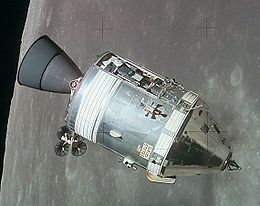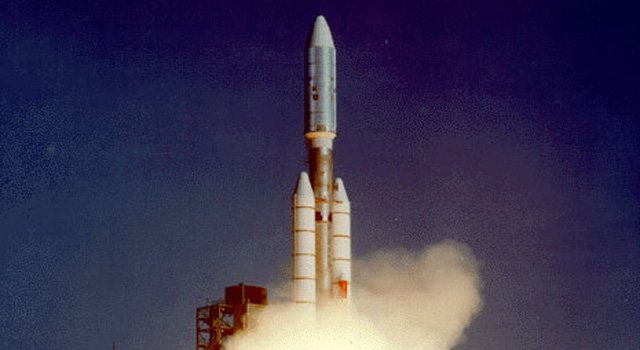Space Travel History
Wernher Von Braun
For anyone seeking to know the full story of America's quest to the stars, the beginning of NASA, the Space Race, or anything along with such regards one must first explore the legacy of Wernher Von Braun and his wonderous contributions to NASA. Wernher Von Braun was a visionary and rocket scientist working for the Nazis in WW2. He started as an amateur rocketeer experimenting and launching liquid and solid-fueled rockets with a club of fellow enthusiasts. But during the war, the Nazis took great interest in the work of Wernher Von Braun and they ordered him to take his A-4 rocket, originally intended for suborbital flights to collect scientific data and turn it into a weapon of war. This was the birth of the V-2 rocket. As the war came to an end, he surrendered himself to the invading U.S. soldiers in hopes of being able to expedite his dreams of reaching the moon while he worked in the United States. He made many contributions while at NASA and even designed the Saturn rockets, which would take a total of 12 men to the moon during the Space Race. To learn more about him, click on the link down below.
www.nasa.gov/centers/marshall/history/vonbraun/bio.html
White Sands - The Birthplace of America's Space Activity
White Sands is the largest missile and conventional weapons testing range in the entire U.S. Containing approximately 3,200 square miles of land. It was first made back during the 1950s. For the U.S. to test its earliest ballistic missiles. Years before the U.S. truly saw rockets as a way of exploration for all mankind. This range was initially used to test modified V2 rockets developed by Wernher Von Braun and his team of scientists who developed the V2 during WWII. After the war, they turned themselves into the U.S. military and worked in the U.S. on developing rockets and working o fulfill Von Brauns long pondered passion of someday putting a man on the moon. A goal that Von Braun would achieve in his lifetime. But it all started here. With Wernher Von Braun, his team, and a collection of relatively primitive rockets. It was here where this promising team of German-born scientists pierced the edge of space and sparked the fire that would become the radical accomplishment of space exploration. To learn more about how these testing grounds eventually led to the creation of NASA and the pursuit of American space exploration please check out this article linked below.
www.nasa.gov/pdf/449089main_White_Sands_Missile_Range_Fact_Sheet.pdf

NASA
Whether you are someone who wants great depth of knowledge on one American space program. Or you are someone who wants an extreme breadth of knowledge regarding all aspects of the history of the U.S. in space. NASA's website is perfect for you. At nasa.gov, you can find many topics about the founding events of our country's space program all the way to the newest and hottest topics of space travel. it truly is a wonderful sight for those who have extra time on their hands that they can spend reading through NASA's history, and keeping up with current-day launches.
Mercury Program
Project Mercury was the first U.S. manned space program. Its main goal (among many others) was to put the first American in space. And it achieved this goal with Mercury 3 on May 5th, 1961 by sending Alan Shepard on a 15-minute flight through space. Later, on February 20th, 1962, John Glenn became the first American to orbit the Earth. The Mercury program really gave NASA the kickstart it needed, and it built some of the most famous legends of the space race as well as set the ground for landing on the moon. If you want to know more about this incredible feat in human history, check out this book listed on the resources page of this website or this video linked below.
Gemini Program
The intermediate stage between the monkeys of Mercury and the EVAs of Apollo, Project Gemini allowed the US to explore the technology and techniques conducive to a true lunar mission. Neat stuff!
NASA History of Project Gemini: On the Shoulders of Titans
Apollo Program
The final voyages - Preparatory flights, and the first human landings on the moon. For now, so too are they the last; Apollo 17's conclusion marked the last steps of mankind on the moon. From preliminary steps with the more advanced CSM and LM to trajectory-assessing flybys and eventual landings, with technology defining the pinnacle of the analog, and the beginning of the digital eras - In a sense, it's all there. Cool stuff, indeed.
For more information, look here.

Thor - The Most Successful U.S. Rocket
The Thor series is probably one of the most underrated rocket series used at NASA. It started with a rocket not much different than the one that took John Glenn into orbit and turned into a widely used launch vehicle now known as the Delta series. A series of rockets that has even surpassed the life of the Space Shuttle. To learn more about this legendary rocket check out the two videos below.
Thor Part I Thor Part II
Escape Velocity - A Brief History of Space
Contrary to the name of this video, this is not a video about escape velocity and how to calculate it. No, It is a brief but information-rich documentary on the history of space exploration. It starts with the very first liquid-fueled rockets to ever launch and goes all the way to 2016. Although the documentary is only about 4 minutes, it is still worth watching as it has tons of rich aerospace history in it! You don't need to know much about rockets or aerospace to watch this.
Evolution of the Saturn Rockets
The Saturn rocket is an iconic launch vehicle in the history of American space travel. It is responsible for taking people two and from the moon. It was a reliable orbital launch vehicle. It launched the very first U.S. space station (Skylab) and carried astronauts to and from that space station. It was quite a useful rocket. But it had many versions for many different purposes. To learn more about the evolution of the Saturn rocket, check out the resources below.
Evolution of the Atlas Rocket
The Atlas rocket was the rocket responsible for launching John Glenn into 0rbit in 1962. It was also a very numerous ICBM in the U.S. arsenal during the Cold War. Today, it has evolved into a much larger rocket used for launching satellites high into orbit around Earth or even past Pluto! Check out this video to see how it went from making an American legend to touching the tips of our Solar System.
Skylab
Skylab was the first American space station and was launched by a Saturn V that was converted to fit this massive payload on top. This station was used for a total of 24 weeks between 1973 to 1974 and provided vital research regarding long-duration missions in space and how they affect the human body. Three missions were sent to this station but as a result of increased solar activity, its orbit was slowed and it fell back into the atmosphere and burned up over Australia. Its time was cut short by far. If you want to learn more about this, check out the Skylab owner's workshop manual and the second link below.
https://www.amazon.com/Skylab-Owners-Workshop-Manual-Manuals/dp/1785210653
www.nasa.gov/mission_pages/skylab/SkylabImagesCol_archive_1.html
https://www.nasa.gov/mission_pages/skylab

Cassini-Huygens Spacecraft
A fine ship - One of the best. Launched on 15 October 1997, the Cassini-Huygens probe became, in 2004, the first to capture into the orbit of Saturn; From there, it provided fascinating images of the ring system and moons - Titan, Enceladus, and more - until its 2017 descent into the Saturnian atmosphere.
The Voyagers
Both Voyager spacecraft were launched in 1977 on top of two different Titan-Centaur rockets. Ironically, Voyager 2 launched first on August 20th, 1977, and Voyager 1 launched 16 days later. Despite the large launch gap Voyager 1 still managed to speed up faster and passed Voyager 2 on its journey to deep space. Voyager 1 reached the edge of the solar system in 2004 and Voyager 2 made it there in 2007. Both are carrying what is called a "golden record." Which is a record containing information that serves as a greeting to any life that comes across these spacecraft.

What's Happening Now?
The Artemis Program
The Artemis Program is a new U.S. space program to return humans to the moon. Not only that but open up the gate to interplanetary travel via the Gateway space station. How this program will achieve its goals is much more complex and different than how the Apollo program did it. So if you are curious about this new program, its timeline, or the new technologies it incorporates. This video is a good starting point that explains the program briefly.
How to Get to Mars
We all have heard of rovers landing on Mars. Especially with the fairly recent landing of the Perseverance rover in 2021. But how did it get there? How long did it take? And once it was there, how did it land? Well, this video answers all of those questions and more! It is a very high-quality and eye-catching film that shows how the Spirit and Opportunity rovers landed on Mars just over a decade ago.

